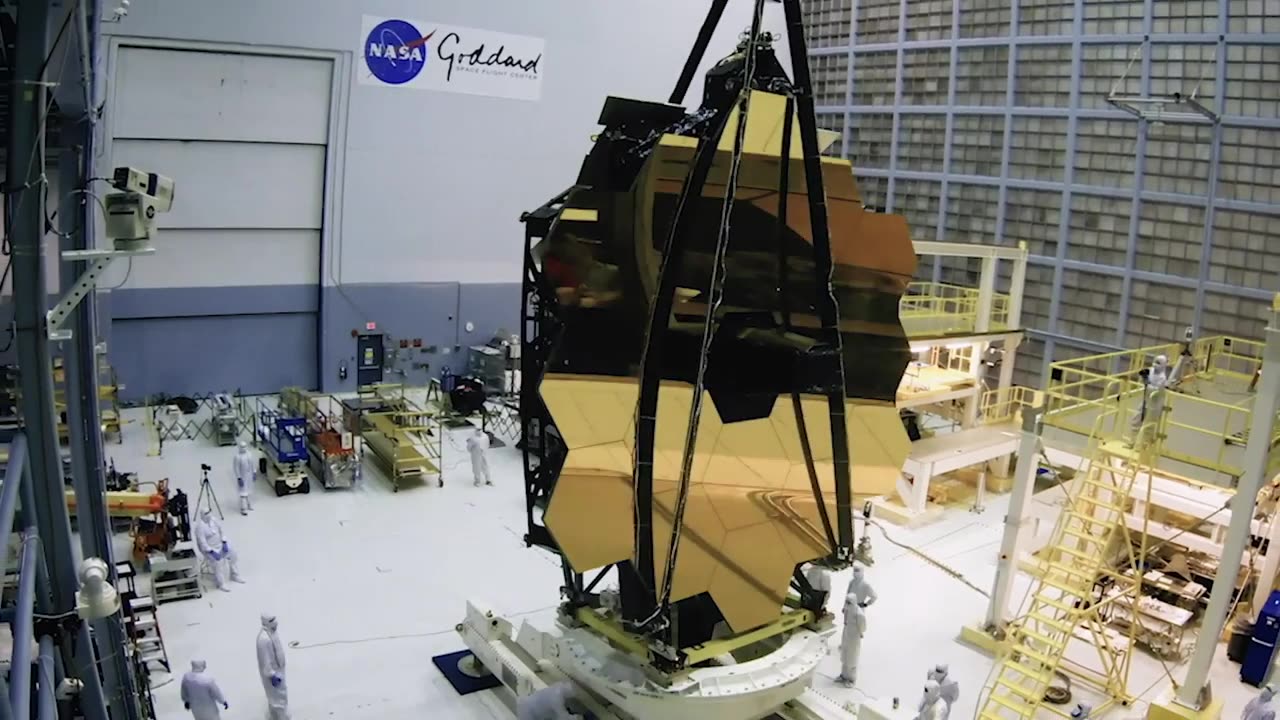Premium Only Content

Introduction to the James Webb Space Telescope Mission
The James Webb Space Telescope (JWST) is a large, infrared-optimized space telescope that is a collaborative project between NASA, the European Space Agency (ESA), and the Canadian Space Agency (CSA). It is named after James E. Webb, who served as the second administrator of NASA and played a crucial role in the Apollo program.
The main objectives of the James Webb Space Telescope mission are:
Infrared Observations: JWST is designed to observe the universe in the infrared wavelength range, which allows it to see through dust and gas that often obscure visible light observations. This enables JWST to study a wide range of astronomical phenomena, from the formation of stars and galaxies to the detection of exoplanets and the study of distant galaxies.
Cosmic Origins: JWST aims to study the origins of the universe by observing the first galaxies that formed after the Big Bang, helping astronomers better understand the early universe and the processes that led to the formation of galaxies, stars, and planets.
Exoplanet Characterization: One of JWST's key goals is to study exoplanets (planets outside our solar system) in detail. It can analyze the atmospheres of exoplanets, which can provide insights into their composition, temperature, and potential habitability.
Stellar Evolution: JWST will study the life cycles of stars, from their formation in dense interstellar clouds to their evolution into various types of stars and ultimately their deaths as supernovae or other stellar remnants.
Formation of Solar Systems: The telescope will observe protoplanetary disks around young stars, helping scientists understand how planets form within these disks and how our own solar system might have formed.
Galactic Evolution: By observing distant galaxies, JWST will shed light on how galaxies have evolved over cosmic time, allowing astronomers to better understand the processes that drive their growth and transformation.
Key Science Programs: JWST has been designed with several specific science programs in mind, including the study of the early universe, the assembly of galaxies, the birth of stars and planetary systems, and the characterization of exoplanet atmospheres.
-
 LIVE
LIVE
SpartakusLIVE
8 hours agoAre they really going to end WZ?? || Duos w/ @GloryJean
314 watching -
 7:01:19
7:01:19
MyronGainesX
21 hours ago $26.71 earnedIsrael Strikes Iran! WAR is here! ICE Riots, Diddy Trial And More!
143K44 -

Alex Zedra
5 hours agoLIVE! Siege X
23.5K3 -
 4:58:19
4:58:19
GloryJean
7 hours ago#1 Gamer Dad Dominates on MnK 🖱️
44.9K1 -
 8:04
8:04
MattMorseTV
11 hours ago $5.72 earnedTrump just DROPPED a BOMBSHELL on California.
56.1K46 -
 46:10
46:10
Friday Beers
11 hours ago $1.58 earnedSkeletons, Cults, & Ex-Girlfriends Terrorize Our DND Campaign
47.9K1 -
 2:03:41
2:03:41
megimu32
5 hours agoON THE SUBJECT: STOP REMAKING CLASSICS — Hollywood Is Out of Ideas!
51.5K10 -
 1:16:43
1:16:43
Precision Rifle Network
1 day agoS4E19 Guns & Grub - Let's Talk About Wind
30.1K2 -
 3:31:13
3:31:13
SoundBoardLord
6 hours agoThriller Thursday! Is Simon There? TERRIFYING!
18.8K4 -
 LIVE
LIVE
FomoTV
5 hours ago🔥 ICE Protests Erupt, Israel Strikes Iran, Missiles Launched – Global Flashpoints LIVE 🚨 | FOMOCAST 06.12.25
107 watching